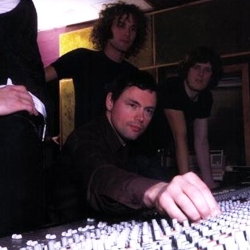
After all the passes, see if you can piece together a vocal of all VG phrases.
If a phrase with a VG mark doesn’t sound as good as you originally thought, go to the G marked vocals and see if one is acceptable.
If you can’t find one that works that’s marked VG or G, go through the other passes to see if a “?” pass works.
If you still can’t find an acceptable take, go through the passes again and listen to the passes that you marked with an X to see if you change your mind about one of the phrases that you considered unacceptable before.
If you still have a phrase that isn’t as good as you need, either comp by word or syllable instead of by phrase, or use Antares Autotune to get what you need.
Comping is standard session procedure these days and is used not only on vocals but also on tracks of all sorts, so it pays to get good at it.
The technique will give you great results and save you a lot of time as well.
Overdubbing Techniques
Editing
One of the most important parts of production in the world of DAWs is editing. Editing means creating a near-perfect performance by moving the timing of a note or phrase either manually or with an app like Beat Detective; replacing a note or phrase (or even the entire track) with one from another take by using cut and paste; or using Autotune, Melodyne, or any of the many other pitch-correction programs to correct the pitch of a note or phrase.
Using these methods, you can make just about any track with shaky timing or tuning almost perfect.
Timing Mistakes
But is perfection what you really want? It’s easy to get carried away and start to edit with your eyes instead of your ears, meaning that everything gets lined up to a grid or quantized, making the track lifeless and sterile sounding.
Sometimes the unevenness of a performance is what makes it exciting, not it’s timing perfection. The real test of a producer is knowing when a part needs to be fixed and when to let it be, and that only comes with experience.
One method I like to use that’s the best of both worlds is to fix only the parts that jump out as having bad timing when played in context with the other tracks.
